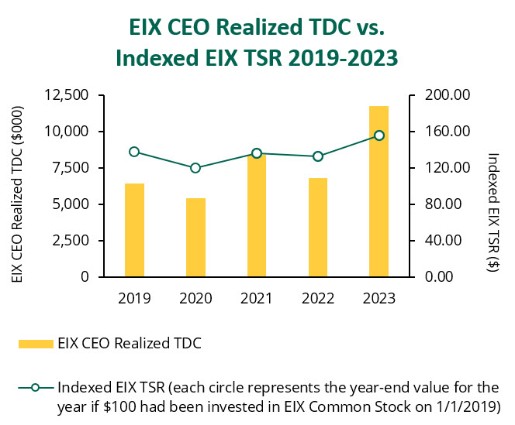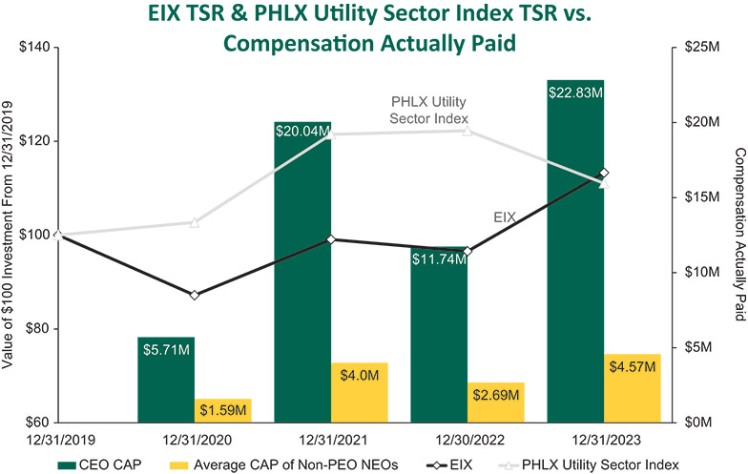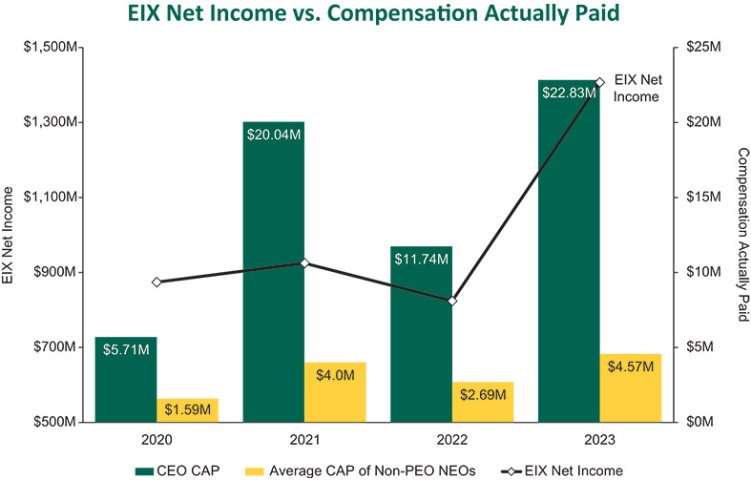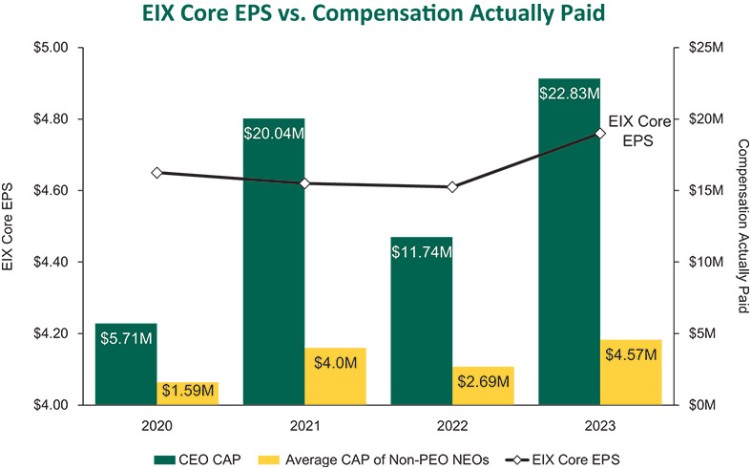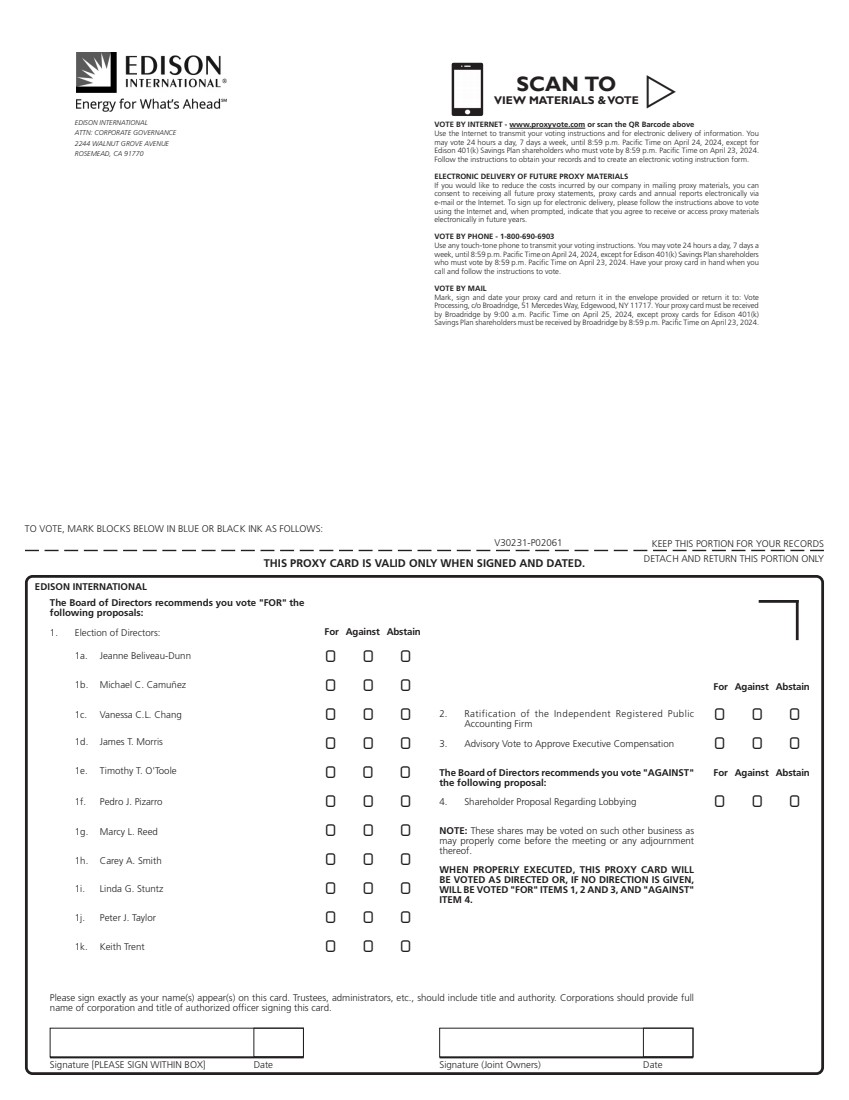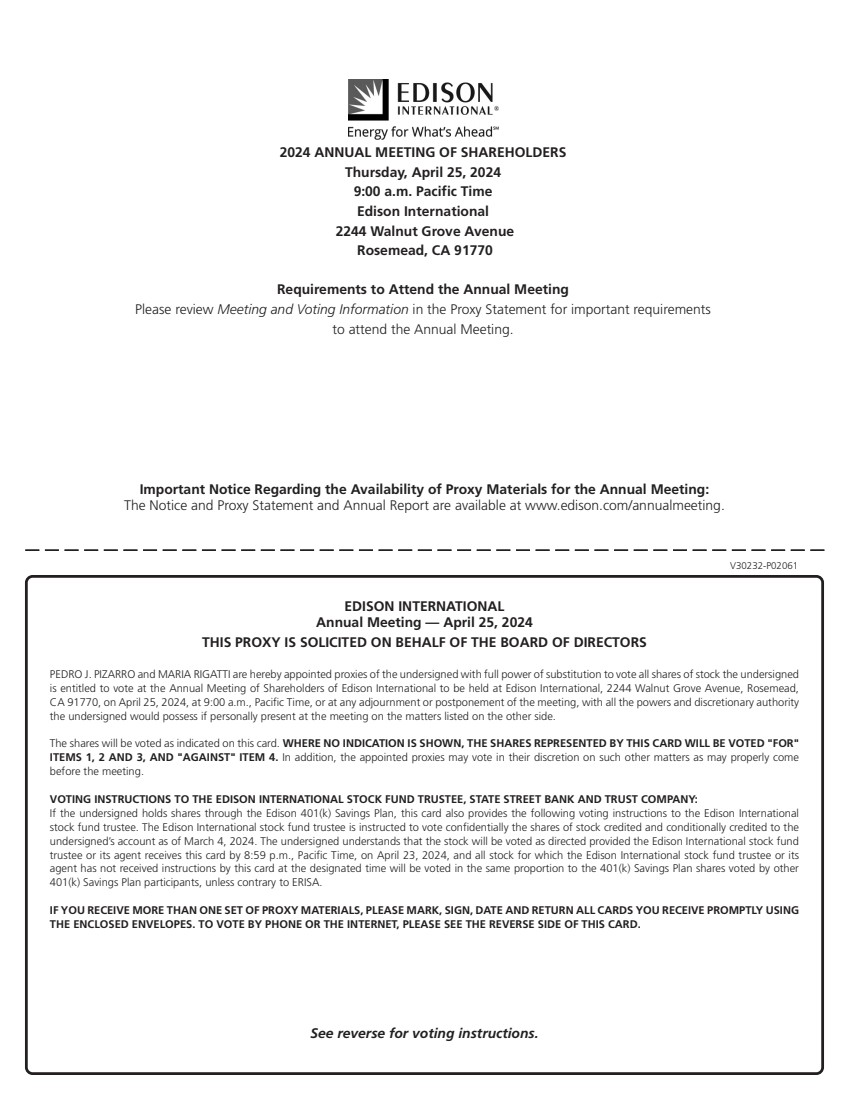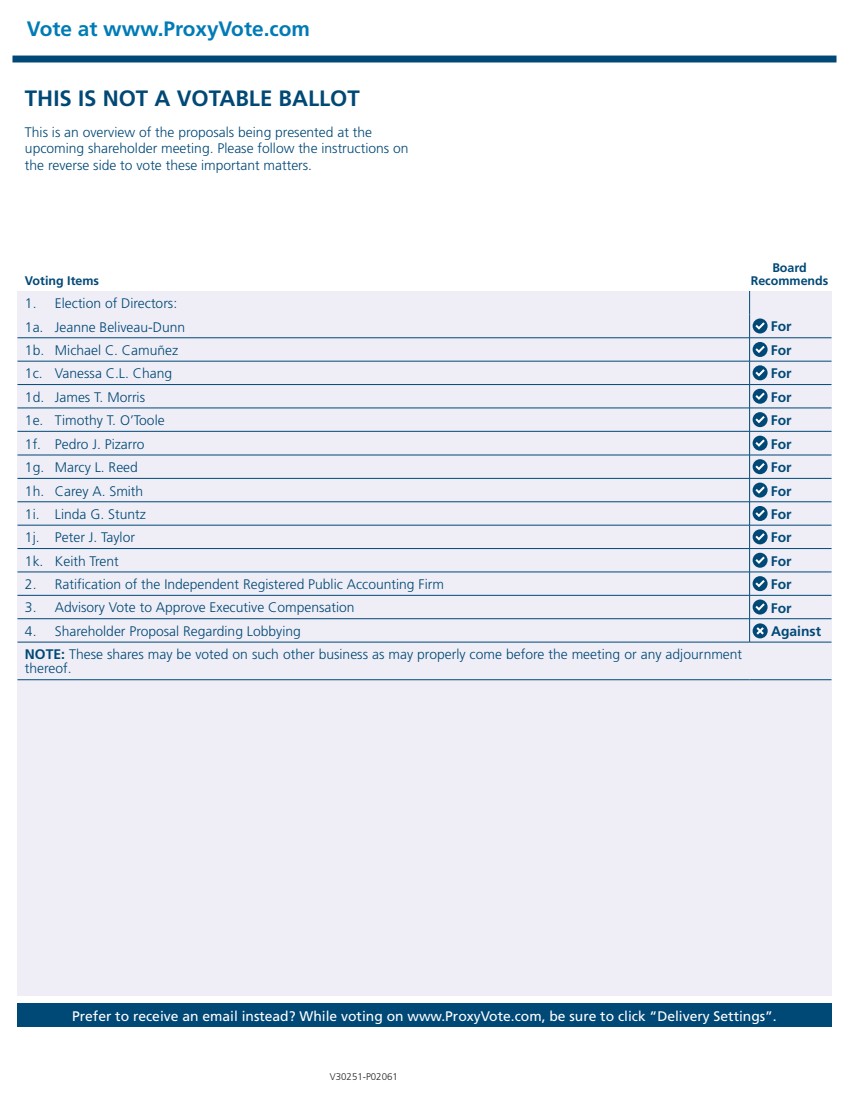SCE Retirement Plan
The SCE Retirement Plan is a non-contributory defined-benefit pension plan subject to ERISA. The Retirement Plan was a traditional final average pay plan with a Social Security offset until April 1, 1999, when for most participants a transition to cash balance features was adopted. Employees hired on or after December 31, 2017 are not eligible to participate in the plan.
Form of Payment
Eligible participants may elect a lump sum, life annuity, joint and survivor annuity (if married), or a contingent annuity. For married participants, payment in a joint and 50% survivor annuity is the automatic form of benefit, absent an alternative election. The cost of the spousal survivor annuity benefit is fully subsidized by EIX and SCE. For single participants, the single life annuity option is the automatic payment method. Participants can choose to start receiving benefit payments after separation from service or can effectively defer commencement of payments until age 72.
Cash Balance Benefits
Eligible employees have cash balance accounts that earn interest monthly based on the third segment rate of a corporate bond yield curve specified by the Internal Revenue Service for the month of August preceding the plan year.
Eligible employees of participating companies also earn a monthly pay credit ranging from 3% to 9% of base pay, depending on the number of age plus service “points” the participant has earned. The pay credits are received for each month the participant has an hour of service with the participating company. An additional credit of $150 per month is applied each month to the cash balance account of each participant who is eligible to receive a pay credit for that month.
Grandfathered Benefits
Eligible participants (at least age 50 or with 60 combined age and service points as of March 31, 1999) are considered “grandfathered” and accrue benefits under prior plan formulas.
Upon separation, the grandfathered participant will be eligible to receive the greater of the benefit calculated under the prior plan formulas (offset by any profit sharing account balance in the 401(k) Plan) or the value of the new cash balance account.
An actuarial reduction of the normal age 65 benefit applies if a grandfathered participant either terminates prior to age 55 and commences benefits prior to age 65, or retires and commences benefits after attaining age 55 but prior to age 61. The pension benefit commencing at age 55 for an employee terminating prior to age 55 with at least five years of service is 53.6% of the normal age 65 benefit, while the pension benefit commencing at age 55 for an employee retiring at age 55 with at least five years of service is 77% of the normal age 65 benefit. Lower early retirement reductions are applied for benefit commencement after age 55 but prior to age 61. An unreduced early retirement benefit is available from age 61 through age 64.
No NEO is eligible for grandfathered benefits under the SCE Retirement Plan.
Vesting
Full vesting occurs after three years of service, upon attainment of age 65, or upon death while employed.
Executive Retirement Plan
The Executive Retirement Plan is an unfunded benefit plan permitted by ERISA and designed to allow NEOs and other executives to receive benefits that would be paid under the SCE Retirement Plan or 401(k) Plan but for limitations under ERISA and the Internal Revenue Code, and certain additional benefits. In connection with the adoption of Internal Revenue Code Section 409A, the Executive Retirement Plan was separated into two plan documents in 2008. The grandfathered plan document applies to benefits accrued, determined and vested prior to January 1, 2005, while the 2008 plan document applies to benefits accrued, determined or vested on or after January 1, 2005.
Eligibility and Vesting
Company executives, including the NEOs, are eligible to participate in the Executive Retirement Plan. Benefits vest after five years of service, upon death or disability, or upon qualifying for severance benefits under the Severance Plan.
Final Average Pay Benefit Formula Prior to 2018
Executives who participated in the Executive Retirement Plan prior to January 1, 2018, including all the NEOs, accrued an age 65 benefit calculated using the following final average pay formula:
(1.75% x Total Compensation for each year up to 30 years) + (1% x Total Compensation for each year over 30 years).
Total Compensation is the NEO’s base salary and annual incentive award earned in the 36 consecutive months when the total of these payments was the highest (the 36 months need not be consecutive for those grandfathered in the provisions effective prior to 2008).
Because he was a senior executive prior to January 1, 2006, Mr. Pizarro accrued an additional service percentage of 0.75% per year for his first ten years of service.






















































